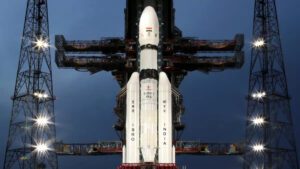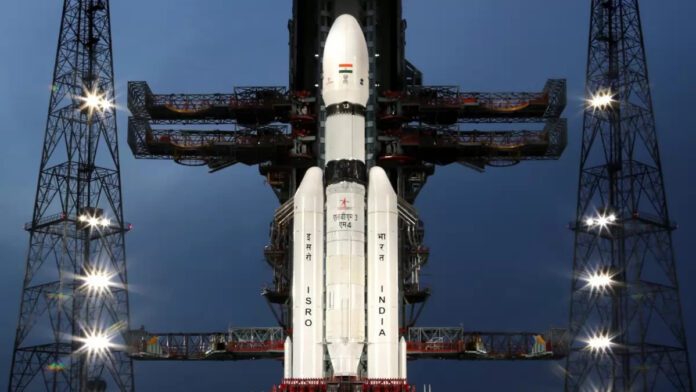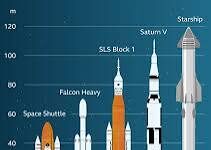Introduction to Chandrayaan-3:
Chandrayaan-3 is the planned third lunar exploration mission by the Indian Space Research Organisation (ISRO). Building upon the successes and lessons learned from the previous Chandrayaan missions, this ambitious endeavour aims to further expand our understanding of the Moon and advance India’s capabilities in lunar exploration and soft-landing technologies.



Mission Objectives of Chandrayaan-3:
Chandrayaan-3 has a comprehensive set of objectives aimed at advancing our understanding of the Moon and expanding India’s capabilities in lunar exploration. The mission’s key objectives include:
- Geologic Mapping and Surface Composition: Chandrayaan-3 aims to enhance our knowledge of the Moon’s geology by conducting detailed geologic mapping and analyzing the surface composition. The mission will utilize advanced imaging instruments and spectrometers to capture high-resolution images and study the mineralogy of the lunar surface. By mapping various regions, scientists can identify geological features, study impact craters, volcanic formations, and investigate the Moon’s history.
- Water-Ice Exploration: One of the primary objectives of Chandrayaan-3 is to investigate the presence of water-ice on the lunar surface, particularly in the permanently shadowed regions near the poles. The mission will employ instruments and techniques to analyze the lunar regolith and subsurface, aiming to confirm and characterize the distribution and abundance of water ice. Understanding the availability of water resources on the Moon is crucial for future human exploration and potential utilization.
- Lunar Exosphere and Space Weather: Chandrayaan-3 seeks to advance our understanding of the lunar exosphere, which consists of tenuous gases and particles surrounding the Moon. The mission will study the composition, density, and dynamics of the exosphere, contributing to our understanding of the Moon’s environment and its interaction with the solar wind and space weather. This knowledge is essential for comprehending the Moon’s atmosphere, its impact on surface processes, and the development of future lunar missions.
- Technological Advancements and Soft Landing: Chandrayaan-3 aims to further refine and enhance the soft landing technologies developed during previous missions. By incorporating lessons learned from Chandrayaan-2, ISRO seeks to improve the design, navigation, and control systems for the lander, increasing the chances of a successful touchdown on the lunar surface. Advancements in soft landing technologies will enhance India’s capabilities in precision landing and pave the way for future missions involving human exploration or resource utilization.
Key Components and Instrumentation of Chandrayaan-3:
Chandrayaan-3 will consist of an orbiter, a lander, and a rover, similar to the previous Chandrayaan-2 mission. These components will work in synergy to perform scientific investigations and gather data from the lunar surface.
The orbiter will be equipped with advanced imaging instruments, such as high-resolution cameras and spectrometers, to capture detailed images and study the composition of the lunar surface. It will also carry instruments to analyze the Moon’s exosphere and study the interaction between solar radiation and the lunar environment.
The lander and rover will play crucial roles in studying specific regions of interest on the lunar surface. They will carry scientific payloads to analyze the soil, rock formations, and subsurface layers, providing valuable insights into the Moon’s geological history and potential resources. The rover will be equipped with mobility systems, cameras, and instruments to perform in-situ experiments and transmit data back to Earth.
Advancements in Soft Landing Technologies of Chandrayaan-3:
One of the primary goals of Chandrayaan-3 is to achieve a successful soft landing on the lunar surface. Building upon the experiences of the Chandrayaan-2 mission, ISRO will further refine and enhance the landing systems and technologies to increase the chances of a successful touchdown.
The lessons learned from Chandrayaan-2’s lander and rover operations will be invaluable in improving the design, navigation, and control mechanisms for Chandrayaan-3. ISRO will incorporate the necessary changes and implement rigorous testing and simulations to ensure the reliability and success of the landing phase.
International Collaborations:
Chandrayaan-3, as a significant lunar exploration mission, is expected to involve collaborations with other international space agencies and organizations. Through partnerships and shared expertise, the mission aims to foster global cooperation in the field of space exploration and leverage the collective knowledge and resources of participating nations. The international collaborations associated with Chandrayaan-3 hold several benefits:
- Knowledge Sharing and Expertise Exchange: Collaborations with international partners allow for the exchange of knowledge, experiences, and technical expertise. By working together, scientists, engineers, and researchers can share best practices, lessons learned, and innovative approaches to address common challenges in lunar exploration. This exchange of knowledge facilitates mutual learning and helps accelerate technological advancements in the field.
- Resource Optimization: Collaborations enable the sharing of resources, including scientific instruments, data analysis capabilities, and ground-based facilities. By pooling resources and expertise, participating nations can optimize their research efforts and reduce duplication of efforts. This approach ensures cost-effectiveness and maximizes the scientific output of the mission.
- Technological Advancements: Collaborations with international partners provide access to advanced technologies, instruments, and engineering capabilities. The exchange of technological know-how allows participating nations to leverage each other’s strengths and accelerate technological advancements in lunar exploration. The integration of innovative technologies from various countries can lead to breakthroughs in space exploration and inspire future missions.
- Diplomatic and Cultural Relations: International collaborations in space exploration promote diplomatic ties and cultural exchanges among participating nations. These partnerships strengthen bilateral and multilateral relationships, fostering mutual trust and understanding. By working together towards a common goal, countries build stronger connections, facilitate scientific diplomacy, and contribute to a peaceful and collaborative global space community.
- Timeline and Future Prospects: The exact timeline for Chandrayaan-3’s launch is yet to be announced by ISRO. However, the mission is in an advanced stage of planning and development. With the incorporation of lessons learned from previous missions and the advancements in technology, Chandrayaan-3 holds great promise for furthering our understanding of the Moon and paving the way for future lunar exploration missions.
Conclusion:
Chandrayaan-3 represents India’s continued commitment to lunar exploration and advancing its capabilities in space research and technology. The mission’s objectives, coupled with advancements in soft landing technologies and scientific instrumentation, will significantly contribute to our understanding of the Moon’s geology, resources, and the broader field of planetary science. Chandrayaan-3’s success will not only benefit India but also contribute to the global scientific community, as we collectively unravel the mysteries of our celestial neighbour and pave the way for future human missions to the Moon.
Also Read about: Chandrayaan-1 and Chandrayaan-2










